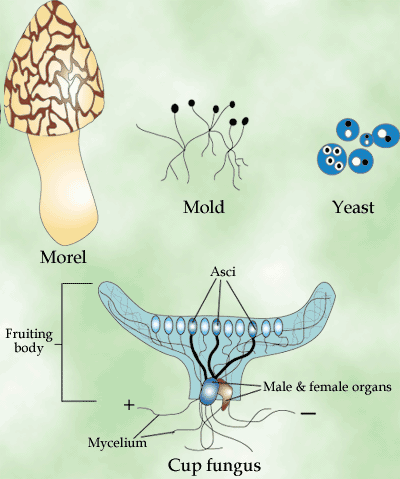Do fungal fruiting bodies have different structural forms?
Often the body of fungi is not noticed until it forms a fruiting body. Some fungi take on different shapes, depending on their environmental conditions.
And another question, who produce large fleshy and edible fruiting bodies?
Fungi produce the fleshy, large and edible fruiting bodies. In respect to this, how do fruiting bodies form? Spores are released from the fungus fruit body by wind, rain and sometimes with the help of animals! When spores land on a suitable surface they grow (germinate) to make the fine threads called hyphae which eventually overlap to form mycelium.
Keeping this in consideration, what are asexual fruiting bodies?
Finally, asexual spores can be formed within structures that are called conidioma. These structures resemble fruiting bodies that form sexual spores. The acervulus is a flat layer of fungal hyphae that forms conidia and often is immersed in the tissue of the plant host. Keeping this in consideration, in what way is a mushroom similar to a flower? Mushrooms aren't really plants, they are types of fungi that have a "plantlike" form - with a stem and cap (they have cell walls as well). This is really just the "flower or fruit" of the mushroom - the reproductive part which disperses the spores.
Can mycelium eat plastic?
The mycelium of Pestalotiopsis microspora can eat plastic products as its primary food source and survives without air or light. This makes it the perfect mushroom for cleaning up plastic pollution.






Similar articles
- How many structural isomers does propane 1 amine have?
- Are fruiting bodies haploid or diploid?
- Do deuteromycetes produce fruiting bodies?
- What is the difference between sporangium and fruiting bodies?
- Does chaga have a fruiting body?
The Chaga's harvested part is actually a woody kern and not a mushroom in traditional terms. This raises the question: Does Chaga have any fruiting bodies? It does, but we rarely see it. The actual mushroom (or fruiting body) forms beneath the bark of fallen or dead trees.
- Is there different types of black seed oil?
The percentage of active ingredients in black seeds oil, Thymoquinone (TQ), Thymohydroquinone THQ and Thymol will vary depending on the climate and region where it is grown. Particularly, Indian and Turkish black seeds oil are the most flavorful varieties. Shaw.
- How are capsule hotels different from normal hotels?
 Drugs Forum
Drugs Forum
